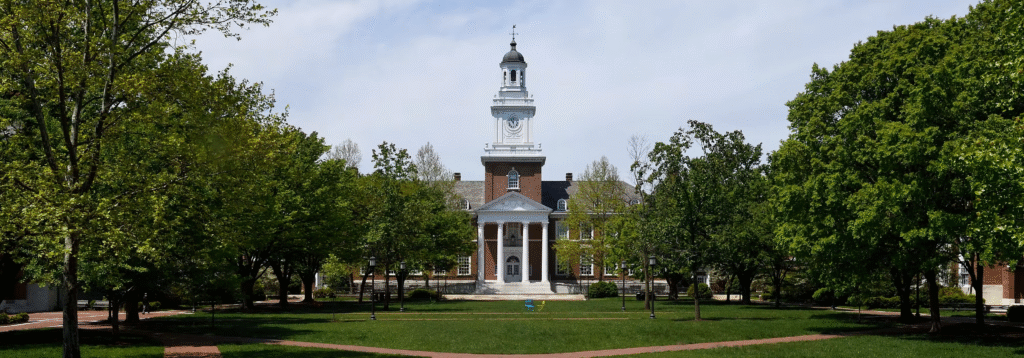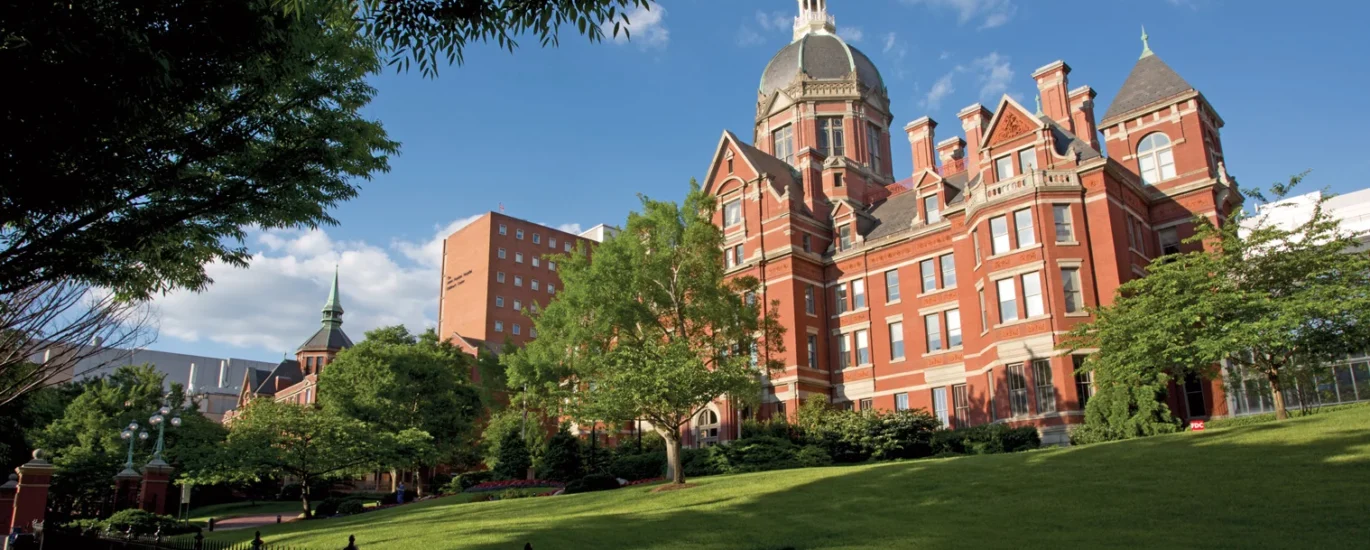Johns Hopkins University
Summary
Johns Hopkins University is a private university established in 1876. Its campuses are spread across Baltimore, the District of Columbia, as well as Italy and China. The main undergraduate campus is Homewood, located in northern Baltimore. Most of the university’s programs follow a semester system, with some offering an extra three-week term in January. Classes are taught in English. Undergrads must live in university housing for their first two years, while graduate students don’t have housing options unless they’re part of the Peabody Institute, a conservatory program.

The university has nine academic divisions covering fields like arts and sciences, engineering, business, education, medicine, nursing, music, public health, and international studies. Popular undergrad majors at Homewood include public health studies, international studies, and biomedical engineering. The graduate schools—especially the School of Medicine, School of Nursing, and School of Education—are highly ranked. Johns Hopkins Hospital, a teaching hospital, is also top-ranked in many specialties. Undergraduates can engage in research through programs like the Provost’s Undergraduate Research Awards, which funds student-led projects with faculty guidance. Key research facilities include the Johns Hopkins University Applied Physics Laboratory, a leading center for national security and space research.
University Data
- Total number of students: 18,835
- Number of international students: 5,745
- Total number of academic staff: 3,816
- Number of international staff: 789
- Number of undergraduate degrees awarded: 1,432
- Number of master’s degrees awarded: 6,960
- Number of doctoral degrees awarded: 726
- Number of research-only staff: 2,971
- Number of new undergraduate students: 1,404
- Number of new master’s students: 3,442
- Number of new doctoral students: 797
Rankings
Johns Hopkins University is ranked #13 in Best Global Universities, based on widely accepted performance indicators.
Global Universities Rankings
- #13 in Best Global Universities
Subject Rankings
- #103 in Agricultural Sciences (tie)
- #46 in Artificial Intelligence
- #57 in Arts and Humanities (tie)
- #10 in Biology and Biochemistry
- #6 in Biotechnology and Applied Microbiology
- #13 in Cardiac and Cardiovascular Systems
- #22 in Cell Biology
- #166 in Chemistry (tie)
- #2 in Clinical Medicine
- #59 in Computer Science (tie)
- #187 in Condensed Matter Physics (tie)
- #162 in Economics and Business
- #130 in Electrical and Electronic Engineering
- #25 in Endocrinology and Metabolism
- #159 in Engineering (tie)
- #304 in Environment/Ecology
- #20 in Gastroenterology and Hepatology
- #181 in Geosciences (tie)
- #4 in Immunology
- #5 in Infectious Diseases
- #145 in Materials Science
- #93 in Mathematics
- #11 in Microbiology (tie)
- #15 in Molecular Biology and Genetics (tie)
- #197 in Nanoscience and Nanotechnology
- #5 in Neuroscience and Behavior
- #4 in Oncology
- #168 in Optics (tie)
- #14 in Pharmacology and Toxicology
- #303 in Physical Chemistry (tie)
- #96 in Physics (tie)
- #467 in Plant and Animal Science (tie)
- #29 in Psychiatry/Psychology
- #3 in Public, Environmental and Occupational Health
- #6 in Radiology, Nuclear Medicine and Medical Imaging
- #4 in Social Sciences and Public Health
- #17 in Space Science (tie)
- #2 in Surgery
2024-2025 Indicator Rankings
Thirteen indicators determine the overall Best Global Universities rank. Below is how Johns Hopkins performs in each category.
- Global Universities: #13 in Best Global Universities
- Global score: 85.2
- Global research reputation: #18
- Regional research reputation: #13
- Publications: #11
- Books: #31
- Conferences: #77
- Normalized citation impact: #85
- Total citations: #8
- Number of publications among the 10% most cited: #11
- Percentage of total publications among the 10% most cited: #115
- International collaboration (relative to country): #344
- International collaboration: #986
- Number of highly cited papers among the top 1% most cited: #11
- Percentage of highly cited papers among the top 1% most cited: #116

